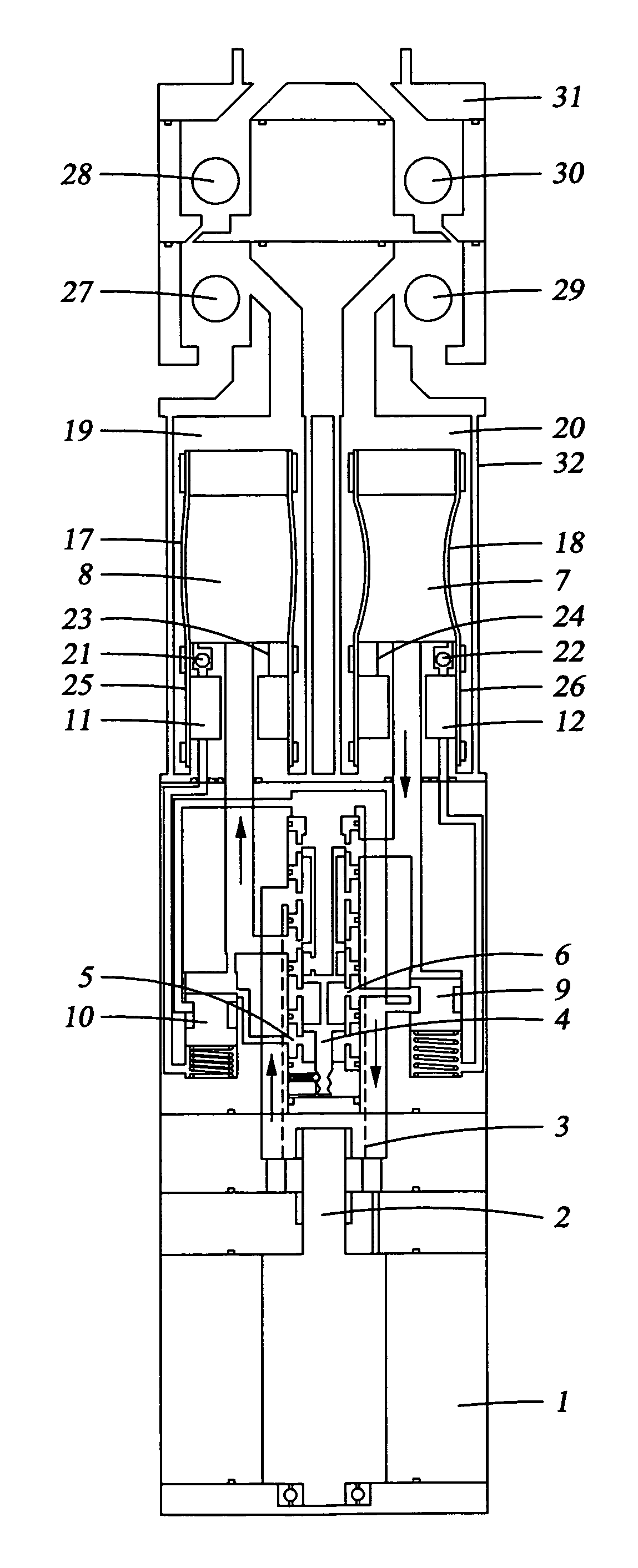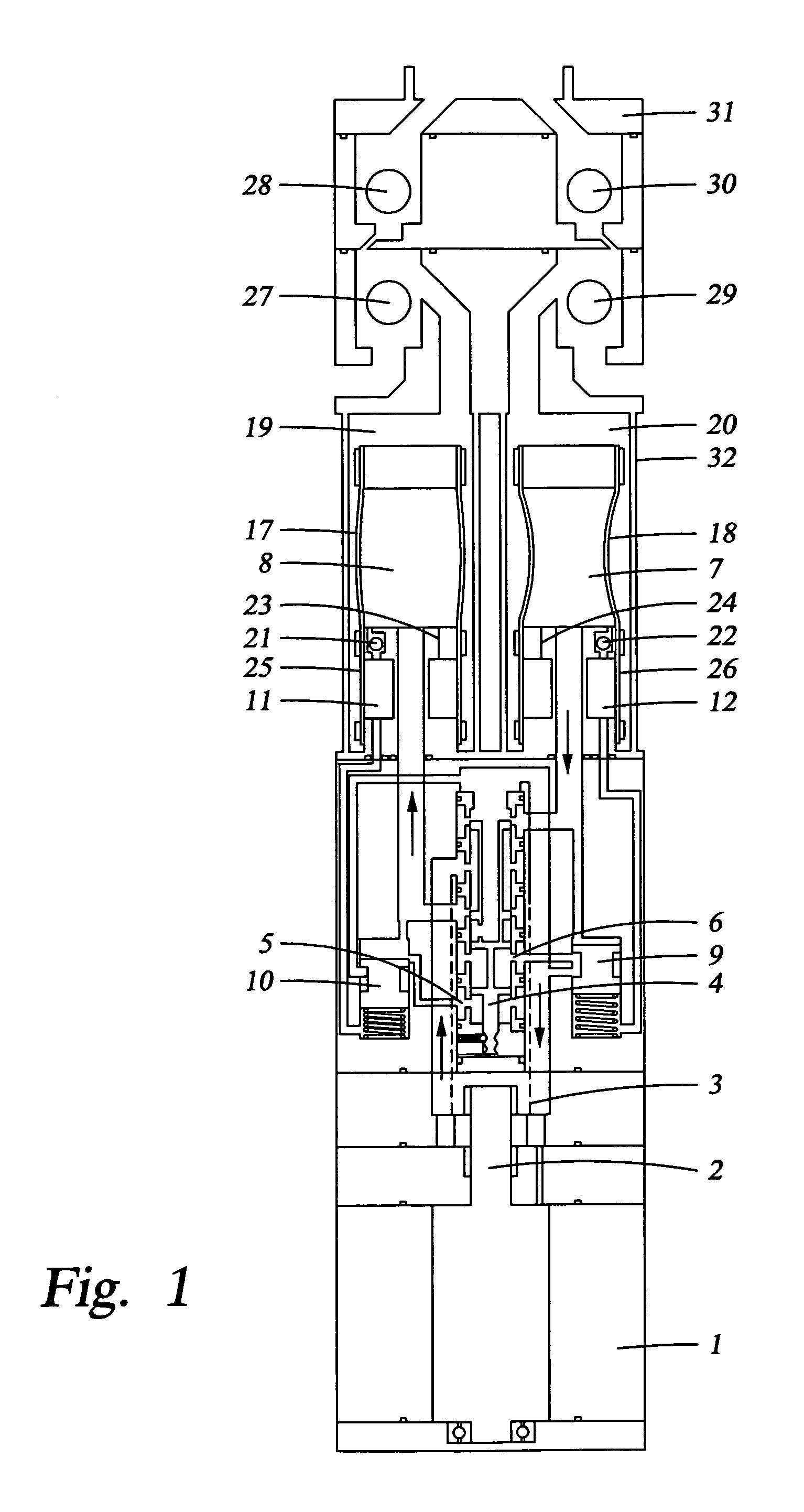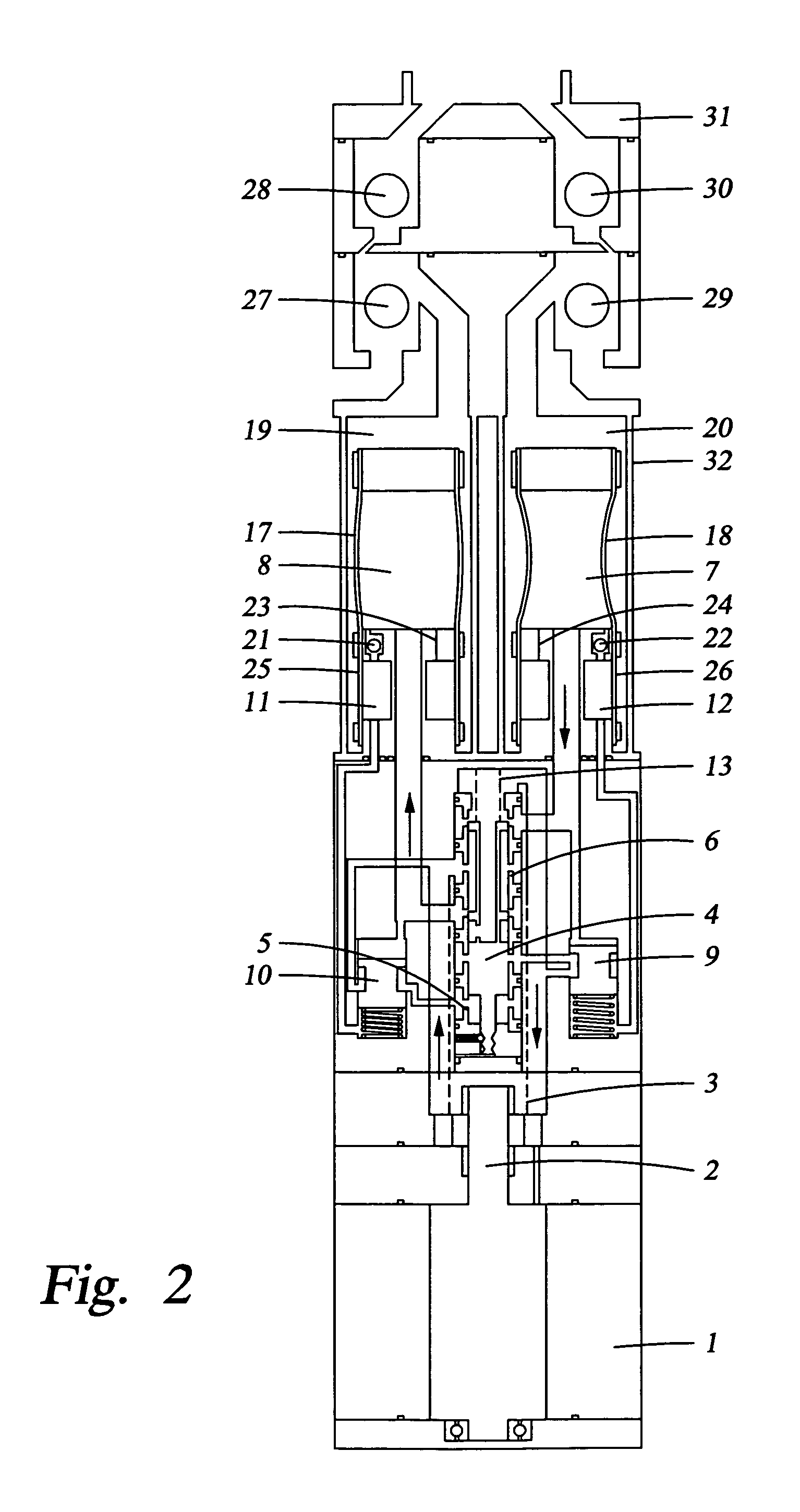Submersible well pumping system with improved flow switching mechanism
- Summary
- Abstract
- Description
- Claims
- Application Information
AI Technical Summary
Benefits of technology
Problems solved by technology
Method used
Image
Examples
Embodiment Construction
[0040]Referring to FIG. 1, the first preferred embodiment of the diaphragm pump uses a prime mover (1) to supply mechanical energy to operate pump mechanism. The prime mover can be an electric motor, hydraulically actuated motor or mechanically actuated motor. The preferred embodiment uses a Franklin electric “Stripper” series motor that is designed of oil and gas applications. The motor is oil filled, 3-phase, 2-pole, 3450 Synchronous AC. The motor is typically 3¾″ in diameter and several feet long. In the preferred embodiment, any free volume located inside the prime mover is filled with working fluid. The preferred working fluid is 10-weight mineral oil.
[0041]The prime mover attaches to the auxiliary pump with a coupling (2). The coupling transmits torque from the prime mover (1) to the auxiliary pump (3).
[0042]The auxiliary pump (3) produces a flow of working fluid under pressure, converting mechanical rotational energy to hydraulic power. A gear pump is used in the preferred em...
PUM
 Login to View More
Login to View More Abstract
Description
Claims
Application Information
 Login to View More
Login to View More - R&D
- Intellectual Property
- Life Sciences
- Materials
- Tech Scout
- Unparalleled Data Quality
- Higher Quality Content
- 60% Fewer Hallucinations
Browse by: Latest US Patents, China's latest patents, Technical Efficacy Thesaurus, Application Domain, Technology Topic, Popular Technical Reports.
© 2025 PatSnap. All rights reserved.Legal|Privacy policy|Modern Slavery Act Transparency Statement|Sitemap|About US| Contact US: help@patsnap.com



